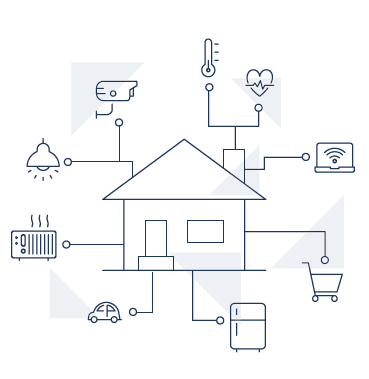LARRY RICHENSTEIN, CEO & FOUNDER, WEPOWER TECHNOLOGIES
Source: www.twice.com, April 2023
Are there any solutions to a looming IoT battery waste problem?
The Internet of Things (IoT) has been growing rapidly over the past few years. There are already billions of connected devices in the world, and that number is expected to reach more than 29 billion by 2025, per Statista. Many of these are small-scale wireless devices that are used to collect data from the environment or send and receive information. These products are designed to be low-power and low-cost, so they can be deployed in large numbers.
The Environmental and Economic Costs of Batteries
However, there is a problem with the way these devices are powered. Most of them use coin-cell batteries, which are small, cheap, and disposable. While this might seem like a good solution at first, it becomes a problem when you consider the scale of the IoT. With trillions of sensors, transmitters, and related devices expected eventually, we could be looking at billions of batteries being thrown away into landfills every year. By some estimations, we already are.
Not only is this wasteful, but it’s also expensive. Batteries’ limited lifespans mean they need to be replaced (or at least recharged) at least every couple of years. The financial cost of regularly replacing all those batteries, especially those in hard-to-reach places, can be astronomical.
This cost is only exacerbated by the fact that batteries never last as long as battery companies predict. This is in part because batteries perform best when they deploy power slowly and steadily, but small-scale devices like sensors and transmitters consume it in short spikes when active or activated. A helpful way to think about this is to consider how a car’s fuel efficiency varies from the highway to city – your tank lasts longer when consistently cruising than stopping and starting. The same is true for batteries.
Batteries’ early (and often unexpected) demise can lead to data loss, system failures, or in the case of a dead water leak sensor battery for example, a flooded basement. Batteries are also not always reliable in extreme temperatures or conditions.
The need for a power supply that is sustainable, scalable, and robust

To address these issues, we need to find a new power supply that is sustainable, scalable, and robust. Ideally, this power supply should be self-sufficient, so it doesn’t need to be replaced or recharged. It obviously also needs to provide enough power to drive the devices’ actions.
One promising possible solution is kinetic energy harvesting through electromagnetic induction. This technology allows devices to harvest energy from their environment, so they don’t need to rely on batteries or other external power sources like wiring. Electromagnetic induction works by moving a magnet through a coil of copper wire, thereby generating an electric current. When captured and stored in a circuit, this current can then be used to power a device to action.
Finding a Solution through Kinetic Energy Harvesting
Kinetic energy harvesting is not a new concept, but recent advancements in technology have made it more practical and efficient for wireless devices. There are now small-scale energy-harvesting components that can generate enough power to run wireless sensors and transmitters. One of the main advantages of kinetic energy harvesting is that it is self-sufficient. Once a device is set up to harvest energy, it can continue to do so pretty much indefinitely, without the need for external power sources.
Consider your car key fob. Imagine if instead of having to replace its battery every year or two, your press of the button will supply the energy needed to activate the transmitter, no batteries needed.
Another advantage of kinetic energy harvesting is that it is scalable, both in number of applications and in size of application. This means that it can be used to power a wide range of wireless devices, from small-scale sensors to larger devices like satellite range transmitters for military applications. Picture a soldier in the field stomping on a small pedal to power a satellite transmission rather than having to carry a heavier battery he or she will eventually need to replace.
Finally, kinetic energy harvesting is robust. Unlike batteries, which can fail unexpectedly, kinetic energy harvesting devices are designed to be durable and reliable. They can operate in extreme temperatures or conditions without the risk of failure. And, because no battery change will ever be needed, the elimination of the battery compartment makes the device more resistant to dust and moisture.
Conclusion
The IoT is growing rapidly, and we need to find a sustainable, scalable, and robust power supply to support it. While batteries have been the default option for powering small-scale wireless devices, they are not the ideal solution. They are wasteful, expensive, and not sufficiently reliable.
Kinetic energy harvesting through electromagnetic induction offers a promising alternative. As someone who has spent 40 years in the wireless electronics industry, I know that the solution to the industry’s problems is always to put power in the hands of the user. In this case, that means giving users the ability to harvest energy from their environment. By doing so, we can create a more sustainable and efficient IoT that saves our landfills from receiving billions more batteries each year.
See also: A Look Back At 5 Challenges Facing The Smart Home Market

